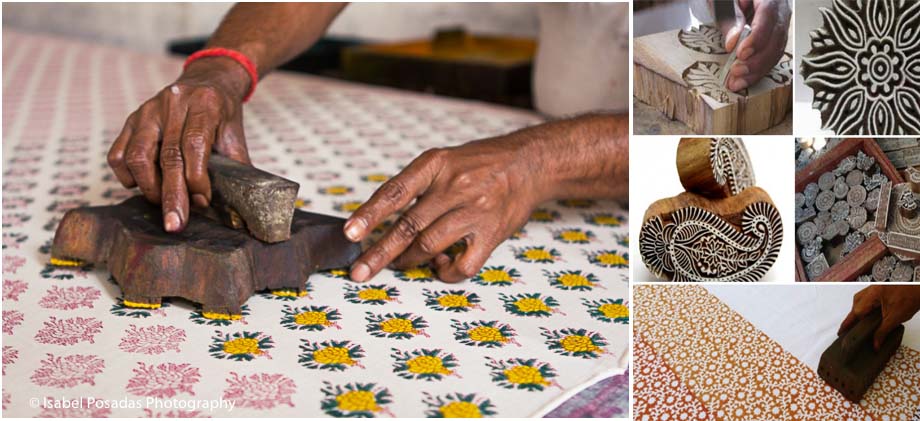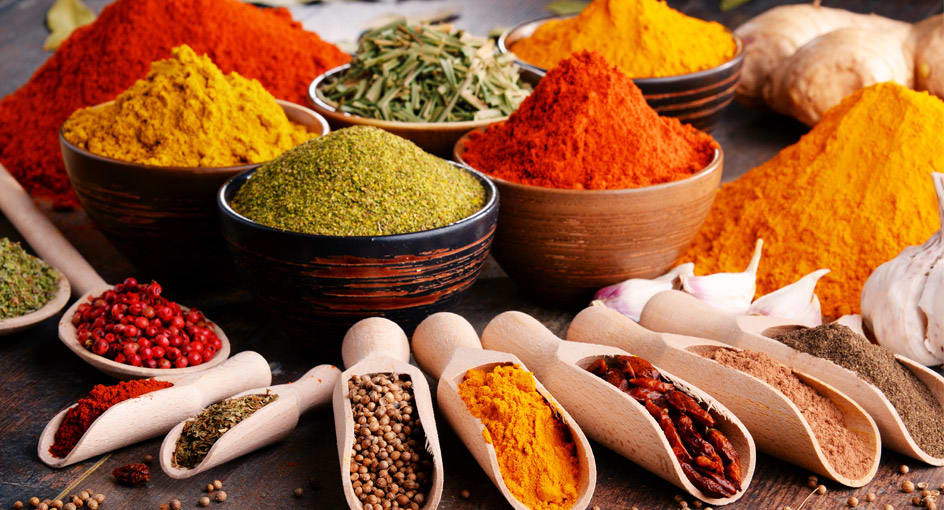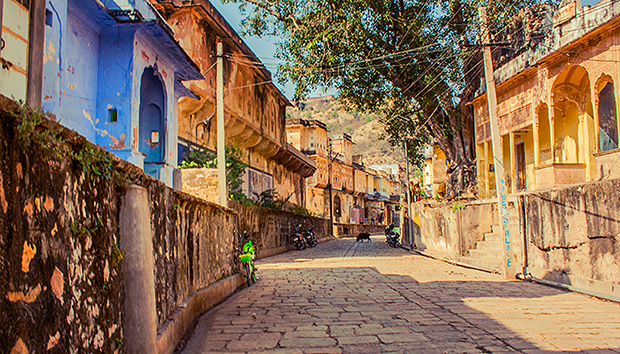Bagru is known for natural dyes and hand block printing. Bagru is the place of Chhipa community. Chhipa community people who are involved in this printing tradition since 100 years ago .Bagru is also known for natural dyeing, indigo dyeing and wooden hand block printing over textile articles.
Bagru is a small village, located at a distance of 32 km from Jaipur, on Jaipur-Ajmer Road. Bagru is most famous for its typical wooden prints. These prints of Bagru are acclaimed all over India and are particularly known as Bagru prints.
The Prints of Bagru, unlike other prints, involve a different kind of printing. The unique method for printing employs wooden block in it. In the process, the desired design is engraved on the wooden block first and then the carved block is used for replicating the design in the preferred color on the fabric.
Chippa Mohalla (printer’s quarter) is the area for those, who are interested in textile printing. One can walk into the quarter, where people are always engrossed with dyes and blocks. The three-centuries-old tradition of block printing is kept alive with the efforts of Bagru artisans. Keeping the convention, these artisans smear the cloth with Fuller’s earth got from the riverside and then dip it in turmeric water to get the habitual cream color background. After that, they stamp the cloth with beautiful designs using natural dyes of earthly shades.
Even today, artisans use traditional vegetable dyes for printing the cloth. Like, the color blue is made from indigo, greens out of indigo mixed with pomegranate, red from madder root and yellow from turmeric. Usually Bagru prints have ethnic floral patterns in natural colors. Bagru prints form the essential part of the block printing industry of Rajasthan.
There are two types of printing using in Bagru, the Dabu resist method of printing and the traditional Bagru print.
DABU PRINTING PROCESS
The dabu mud is made from locally available black clay, spoiled wheat flour, calcium and limestone. The mud is filtered by foot through a net in order to strain out rocks and minerals – leaving a thick, smooth mud paste. The process is often compared to the way grapes are crushed to make wine.
Blocks to print dabu are distinctly different, with deeper grooves for mud, and wider lines compared to blocks for the traditional Bagru print. After the mud is made, it is ready to be printed. The printer dips the block in the mud and stamps it on the fabric.
Sawdust is gently sprinkled over the mud to prevent smudging, preserving the natural beauty of the mud print.
The fabric is taken directly from the printing table to dry outside beneath the hot, rajasthani sun. The mud-printed fabric is then dyed,commonly in indigo wells, or pot-dyed in other colors like grey, yellow, pink, and more.
After dyeing, washers rinse the mud off the fabric, revealing a white color where the mud was protecting from dye. The natural cracks in the mud can be seen in the white print that is unveiled after the wash.
The fabric is left to dry again before it is quality checked, pressed, folded, packaged, and shipped.
BAGRU PRINTING PROCESS
After receiving the grey cloth, Artisian cut the fabric to size depending on what type of product they are printing. The fabric is pre-washed and soaked for 24 hours to remove all starch, oil, dust, or any other contaminants.
The fabric is dyed in a harda solution, which allows natural dyes to adhere to the fabric and become colorfast. Harda is extracted from the myrobalan fruit, (terminlia chebula) and has traditionally been used in ayurvedic medicine for its digestive healing abilities.The yellow dyed fabric is then dried in open fields that have become a signature of Bagru’s beautiful landscape.The fabric is now a yellowish cream color (unique to the Bagru printing process) and is ready for printing.
The harda fabric is spread and smoothed on long padded printing tables. The printer gently taps the wooden block in a tray of the proper colored dye, either natural or pigment, depending on the buyer’s specifications. The printer places the block on the fabric, and gives one or two swift hits on the block to distribute the dye. This is repeated over and over again, first with the gadh block (background), and again with the rehk (fine outlines) and daata (inside filling) blocks in different colors.
After all the printing is complete, the fabric is left to dry for 2-3 days before it is washed. Once the fabric is thoroughly dried, it is boiled in a large copper pot with a mixture of natural ingredients, including alum and various flowers. The fabric is constantly stirred to avoid burning at the bottom of the pot. After boiling, the fabric is once again washed to remove any excess dyes or dirt, and again dried in the sun. The block printed fabric is finally ready to be packaged and sold.
The tour usually starts at 8 or 9 am, where we explain about Bagru. Then we proceed for a tour of Bagru, showing you all aspects of the printing process from washing and boiling the fabric, block making, making natural dyes, and the printing process itself. At the end of the tour you will get your own fabric and dyes so you can try out your own printing, right here in our WORKSHOP STUDIO! The workshop ends around 12 or 1pm.
For Reservation or Enquires : Please contact Us.




